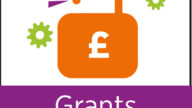How to persuade funders and secure support
George Knight gives us the answers to writing a stand-out grant proposal.
In today’s fundraising landscape, a well-written proposal is more than just a requirement; it’s your chance to bring your charity’s vision to life and inspire funders to join you.
Better writing means greater success, and the skills to craft persuasive applications are invaluable for both new fundraisers and experienced pros.
What funders are looking for
Every funder wants confidence that their money will make a genuine difference. Strong proposals communicate three key things: why, what, and why you.
Why? Funders invest in change. A proposal must show not only what you will do but also the difference it will make. Think about the reasons why you do the work.
What? A clear proposal demonstrates that you understand your mission and know how to deliver it. Funders should be able to grasp your projects priorities, and plans. This can be achieved by providing clear performance measures, reporting structures and budgets.
Why you? Demonstrating past success helps funders trust that you can deliver again. Share evidence, data, and testimonials that prove your track record.
Don’t underestimate the power of narrative. Funders don’t just want statistics, they want to feel part of a story of positive change.
How to make proposals persuasive
A persuasive proposal is one that blends facts with storytelling.
To do this effectively:
- Express your mission clearly and forcefully. Avoid jargon. Instead, use strong, simple language that conveys urgency and purpose.
- Present your work through real stories. Illustrate your impact by showing what change looks like for a beneficiary, community, or issue area.
- Emphasise outcomes over processes. For example, rather than writing “We will run five training sessions,” highlight that “We will equip 100 young people with skills that improve their employment prospects.”
- Proposals must be tailored. Mirroring a funders language and adding that extra level not only builds familiarity but shows respect for the funder’s priorities and improves your chances of success.
Common pitfalls to avoid
Even the best charities sometimes miss out on funding because of avoidable mistakes.
Here are some of the most common pitfalls:
- Ignoring the guidelines: Every funder has their own requirements. Not answering a specific question or exceeding a word count can mean automatic rejection.
- Overloading with information: More detail is not always better. A concise, focused proposal often lands stronger than a lengthy, unfocused one.
- Undervaluing storytelling: Funders may appreciate data, but numbers alone rarely persuade. Always link figures back to real people and real change.
- Copy-and-paste approaches: Recycling generic proposals for different funders rarely works. Tailoring is essential.
By avoiding these errors, your proposals stand out for the right reasons.
Final thoughts
Grant makers want pitches that are engaging, persuasive, and powerful.
They want to see evidence of impact and value for money, but also to believe in your mission and your people.
Ultimately, proposal writing is both an art and a science. Mastering it not only increases your funding success but also strengthens the way your charity communicates its purpose to the world.
Want to find out more? Join us on Thursday 18th September for the Grants Unlocked 2025 conference, register here.

